Best 3D Printer 2024: Top Picks for a Variety of Projects
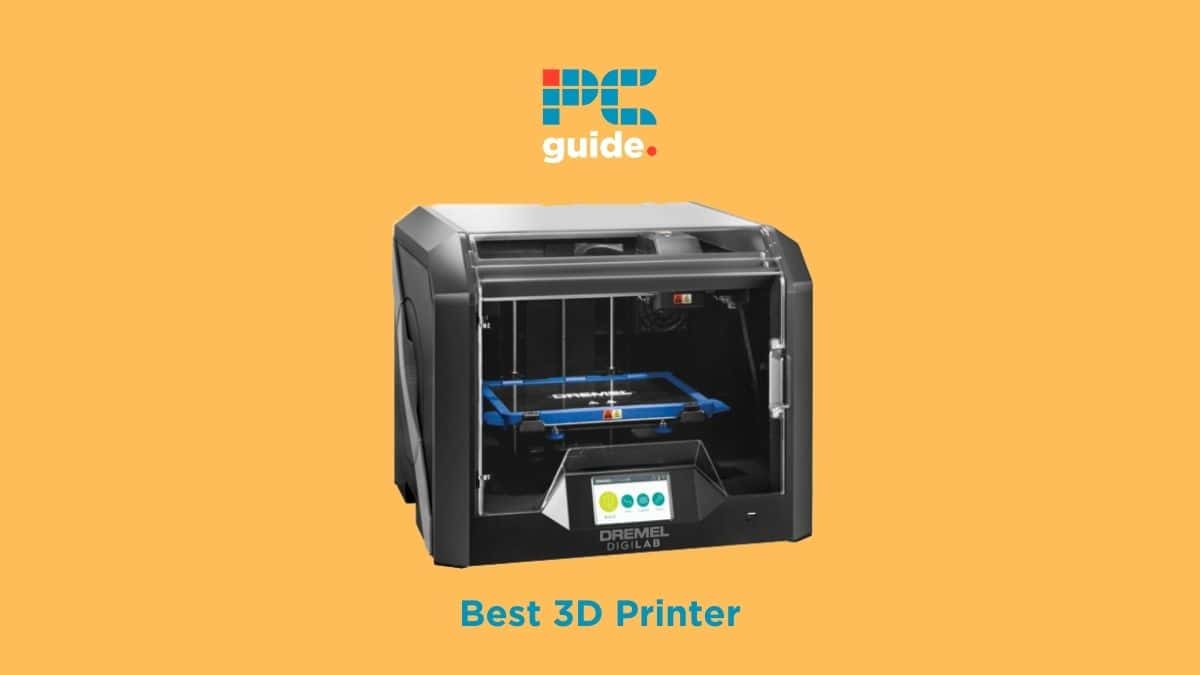
Table of Contents
The world of 3D printing, once considered an inaccessible and complex field, has become far more approachable in recent years. With plenty of consumer-grade models on the market, it’s easier than ever to find a printer for your needs – but conversely, finding the best 3D printer has become all the more difficult. With so much choice, beginners and newcomers to 3D printing will struggle to find the right product to suit their needs.
To help, we’ve compiled some recommendations of top 3D printers, across a range of different use cases. Depending on whether you need a simple budget entry point, or a more comprehensive 3D printing solution, our choices today match as many niches as possible.
-
Editor’s Pick
Dremel DigiLab 3D45 3D Printer
- Build Volume: 254mm x 152mm x 170 mm
- Filament: PLA, ABS, PETG, Nylon,
- Connectivity Technology: USB
- Filetype: GCode
-
Best Budget 3D Printer
Creality Ender 3 V2
- Build Volume: 220mm x 220mm x 250mm
- Filament: PLA
- Connectivity Technology: USB, Micro-SD
- Filetype: STL
-
Best IDEX 3D Printer
Sovol SV04
- Build Volume: 300mm x 300mm x 400 mm
- Filament: PLA, ABS, PETG, PC, PVA, Wood
- Connectivity Technology: MicroUSB
- Filetype: STL, OBJ
-
Best Multipurpose 3D Printer
Snapmaker A350T
- Build Volume: 320mm x 330mm x 350mm
- Filament: PLA, ABS, PETG, TPU
- Connectivity Technology: WiFi
- Filetype: STL, OBJ
-
Best SLA 3D Printer
ELEGOO Mars 4 Max MSLA 3D Printer
- Build Volume: 195mm x 122mm x 150mm
- Filament: SLA
- Connectivity Technology: USB
- Filetype: STL
How We Picked the Best 3D Printer
As with many technology facets, finding a de facto “best” 3D printer is difficult. We’ve tried to classify our picks by different use cases, such as print volume, print speed or the variety of compatible filament available. Additionally, we considered the overall price-to-performance, using the various Features and Considerations to highlight the value of some models over others.
We settled on five 3D printers, at different price points and use cases, that are all worthwhile considerations for the “best” 3D printer. We’ve detailed why we picked each unit below, and the respective strengths – or weaknesses – each unit has over the others.
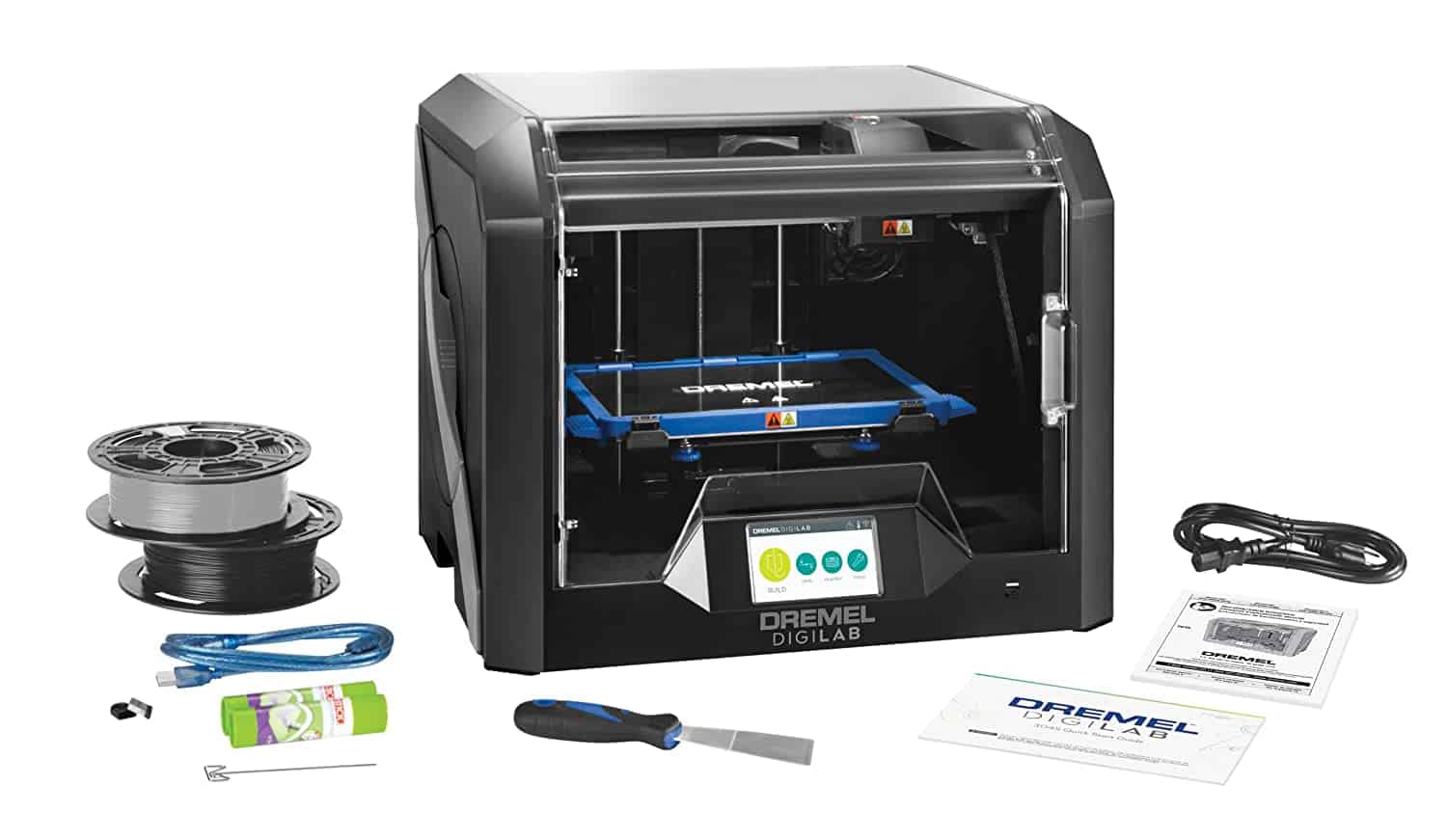
- Build Volume: 254mm x 152mm x 170 mm
- Filament: PLA, ABS, PETG, Nylon,
- Connectivity Technology: USB
- Filetype: GCode
One of our favorite 3D printers, the DigiLab combines quality, versatility and reliability into a highly valuable print solution for any application.
- High print quality – accurate to within 0.05mm, the DigiLab is well-suited to complex prints.
- Varied filament compatibility – with a range of compatible filaments from PLA to Nylon, you’ve got plenty of print options to choose from.
- Limited build volume – the enclosed design of the DigiLab means that its volume is fundamentally limited.
Our top choice for 3D printing in 2025 is the Dremel DigiLab 3D45, a stunning 3D print solution under $2000. Boasting incredible quality-of-life features in a condensed package, this unit is ideal for nearly every 3D printing scenario.
Compatible with a broad array of filaments up to 1.75mm thick, you’ve got plenty of options to choose with the DigiLab. The built-in RFID scanner detects the type that you use, and adjusts print settings accordingly, making it easy to garner the results you need. A built-in camera enables you to view the print-in-progress, and the glass print bed reduces the chances of warping. Print results are accurate to within 0.05mm, meaning that the DigiLab 3D45 is ideal for complicated designs.
They’ll have to be small, however. The one flaw in the DigiLab’s design is that it’s an enclosed 3D printer, meaning that the build volume is limited to 250mm x 150mm x 170mm. If that’s adequate for your purposes, then the DigiLab is a highly worthwhile 3D printer to invest in.
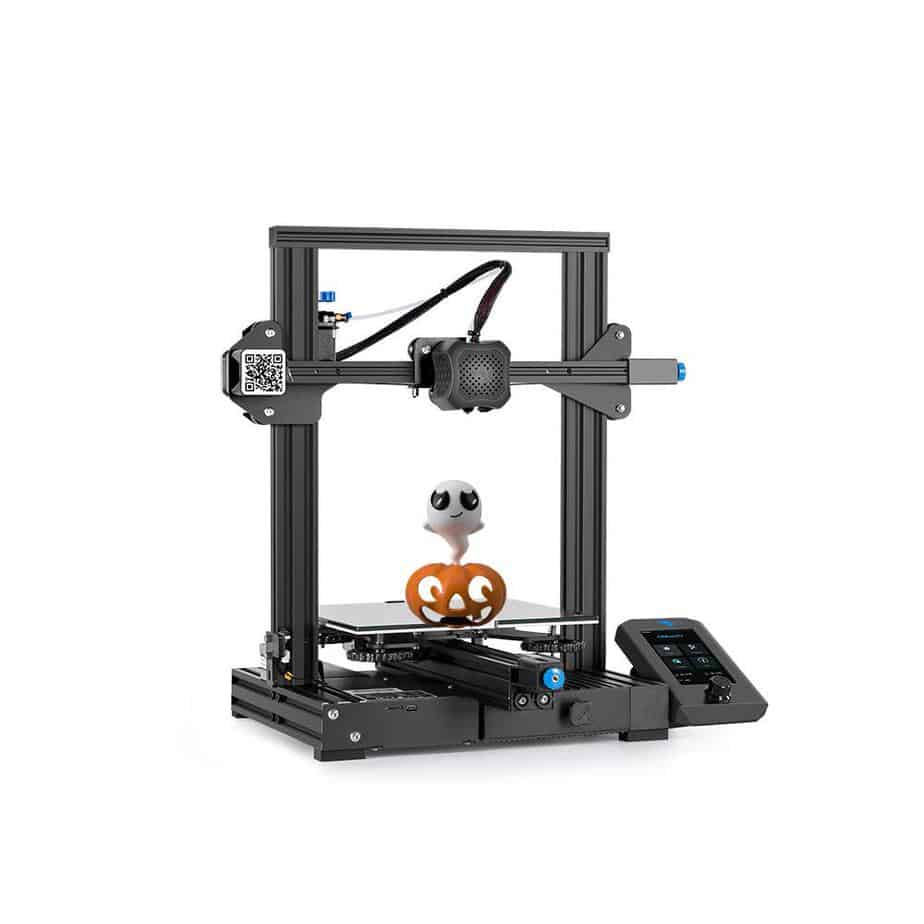
- Build Volume: 220mm x 220mm x 250mm
- Filament: PLA
- Connectivity Technology: USB, Micro-SD
- Filetype: STL
One of our favorite low-cost 3D printers, the Ender 3 V2 is a great medley of quality and affordability.
- Excellent price-to-performance – the Ender 3 V2 is capable of stunning 3D prints, with premium features at a price under $300.
- Easy assembly – ideal for beginners, this 3D printer ships mostly pre-assembled.
- Manual filament loading – the Ender 3 V2’s filament loading system is difficult to learn, especially if coming from another 3D printer.
Creality are one of our favorite brands for 3D printers, and the Ender 3 V2 continues their tradition of affordable yet high-quality models. Boasting quality features at a discount price point, we’re big fans of this budget 3D printer.
What makes the Creality Ender 3 V2 a remarkable budget offering is the quality of the prints. Whatever the size or shape of the creation, or the supported filament types, the Creality Ender 3 V2 delivers. With a 220mm x 220mm x 250mm build volume, 100-400 micron layer height, and 100-micron printing resolution; the Ender 3 V2 gives you high speed, high quality and high accuracy with ease. Coming mostly pre-assembled, this discount 3D printer is ideal for beginners and journeymen 3D print enthusiasts alike.
That said, regardless of your skill level, you may struggle with the filament loading on this 3D printer: it’s a different manual process to most others, and so it can be difficult to learn. It’s a small hurdle, however, and the Ender 3 V2 is still a tremendous budget 3D printer.
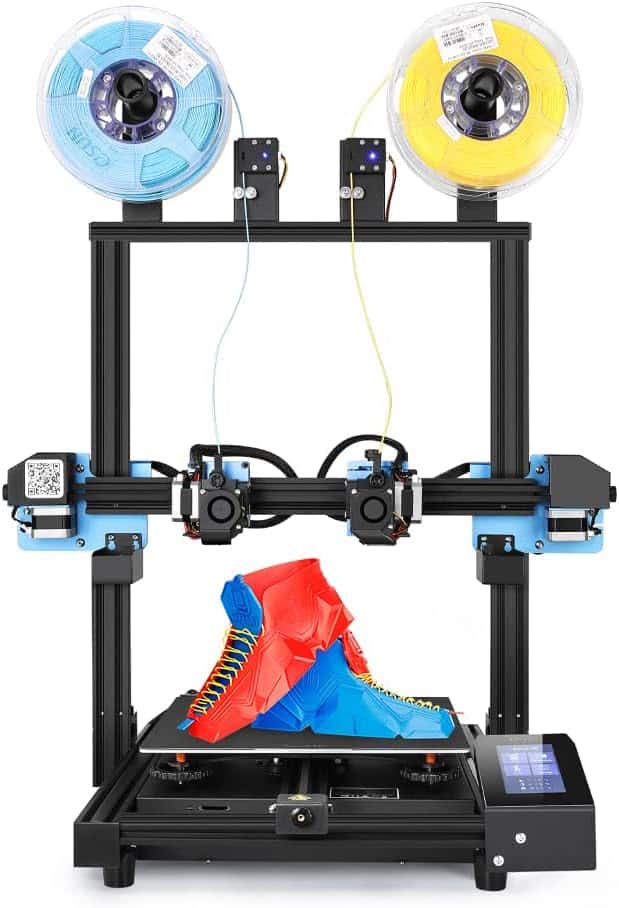
- Build Volume: 300mm x 300mm x 400 mm
- Filament: PLA, ABS, PETG, PC, PVA, Wood
- Connectivity Technology: MicroUSB
- Filetype: STL, OBJ
Utilizing dual extruder technology, the Sovol SV04 is a versatile and high-quality 3D print solution.
- Efficient extruders – the two extruders are able to work seamlessly thanks to their dual drives and dual z-axis controls for seamless acceleration.
- Easy to use – the SV04’s software is intuitive and quick to master, and is compatible with a range of slicers.
- Inconsistent auto leveling – the SV04’s automatic leveling is the one automated feature that doesn’t work well, and it’s a potential deal-breaker for beginners.
At a reasonable price and with the latest direct-drive extruder technology, the Sovol SV04 is a top-notch professional 3D printer, and a worthwhile addition to any design studio for great-quality color 3D printing.
The SV04 can print models up to 300mm x 300mm x 400 mm, which is plenty for most people who don't need a heavy-duty printer for commercial purposes. It uses two extruders to produce crisp and clean colors on your objects. The Direct Drive Extruders are much smaller in size, and are capable of higher precision than their regularly-sized counterparts. The dual extruders mean that you can print multiple models at once or in multiple colors. A less important, but welcome nonetheless, feature is the easy-to-use Sovol software, which is quick to understand and allows you to pause a print should you run out of filament or suffer a power issue.
However, there are some issues with the SV04. The printer's auto-leveling consistency can vary, causing unwanted wobble that can ruin the printing process. You may need to do a few practice prints to run it in, which isn't ideal for those wanting as little waste as possible. For a veteran designer wanting a larger 3D printer with more varied color options, it's hard to beat the Sovol SV04.

- Build Volume: 320mm x 330mm x 350mm
- Filament: PLA, ABS, PETG, TPU
- Connectivity Technology: WiFi
- Filetype: STL, OBJ
A 3-in-1 machine, the A350T is a productivity powerhouse near-unrivaled in its value for money.
- Smart features – near every element of printing is automated thanks to the A350T’s intelligent, user-friendly design.
- Multipurpose device – with a CNC carver and laser engraver built-in, this 3D printer is 3-in-1.
- Loud printing – though all open-frame 3D printers are noisy, the A350T is loud even by those standards.
The Snapmaker A350T is a professional-grade 3D printer, ideal for businesses – and if that was all this unit was, it would be enough. But in combining this high-end 3D printer with two other devices, the value of this unit skyrockets.
With a build volume of 320mm x 330mm x 350mm in an open-frame design, the A350T is a healthy median between print volume and print quality. Factor that in with a built-in laser engraver and CNC carver, and this unit is a productivity powerhouse. Even ignoring the other two functions of this 3-in-1 unit, the 3D print functionality is stellar. Nearly every factor of this 3D printer is automated: with auto-leveling and power-outage detection just some of the ease-of-use features the A350T packs.
That said, it is a loud printer: being open-frame, one expects a certain level of noise, but the A350T is noticeably louder than other 3D printers. If you don’t mind some not-so-subtle ambience, then we highly recommend the A350T.
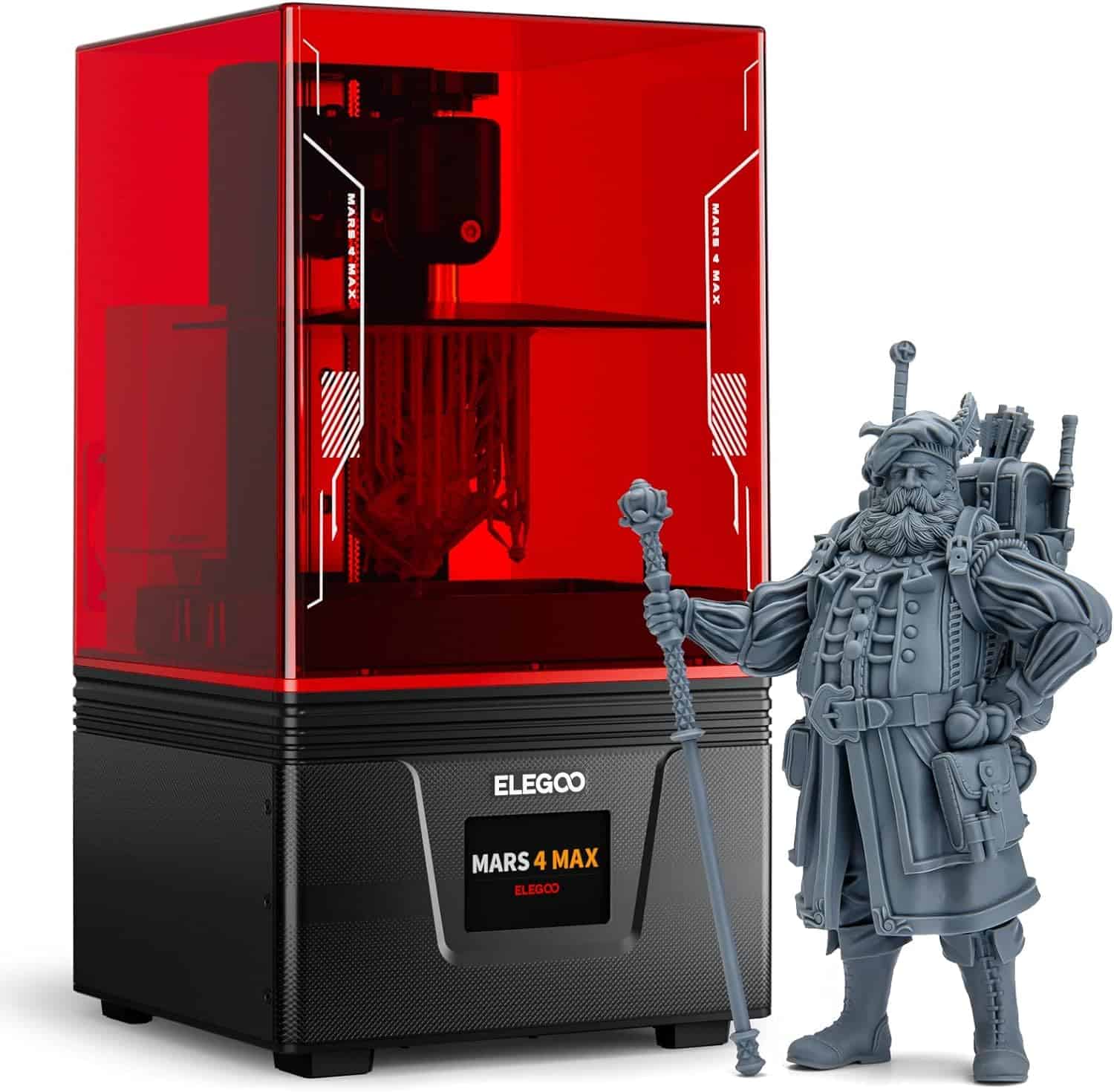
- Build Volume: 195mm x 122mm x 150mm
- Filament: SLA
- Connectivity Technology: USB
- Filetype: STL
An unconventional choice for some, the Mars 4 Max offers an amazing alternative 3D printing method for certain use cases.
- Unique printing method – for some applications, SLA printing may be more suitable than traditional FDM printers.
- Easy assembly – practically plug-and-play, this 3D printer is well-suited to beginners.
- Resin only – where other 3D printers can print using a range of materials, the Mars 4 and other SLA printers are limited to resin.
For our final pick, we have the ELEGOO Mars 4 Max, which is a resin 3D printer – known technically as an SLA printer. This unique printing method is just as valid as traditional FDM printing, and may be better suited to some use cases.
The Mars 4 is practically ready out of the box, with a quick and easy assembly process. Once up and running, you'll be impressed by how quickly and efficiently this 3D printer operates, with a build volume that is ideal for miniatures or other small figures and a Z-axis rail for quick directional change. The 4K display allows for crisp detail and easy configuration, and the build plate is easily removed for quick access.
That said, the unique method of SLA printing means that it isn’t compatible with other filaments as an FDM printer can be. If material isn’t as important a factor as quality, then consider the Mars 4 Max.
Features and Considerations
Of course, there are plenty of worthwhile 3D printers on the market today – so don’t be shocked if your choice didn’t make the cut – but consider the following to ensure a quality product:
Filament Compatibility
There are a wide range of 3D printer filaments on the market: from olfactory favorites such as PLA or ABS, to more niche and situational options like carbon fiber. Depending on what you need your model for, it may be worth investing in a more compatible unit – to give yourself versatility.
Build Volume
Similar to the print size on a traditional printer, 3D printers have a limit to the size they can print. Open-frame printers are generally capable of larger build volumes relative to their size, but it varies from model to model. If you don’t need a large 3D printer, most models are capable of respectable print sizes.
Print Speed
Don’t confuse print speed and acceleration: though they’re quite similar, acceleration refers to the speed at which the 3D printer’s extruder can change direction – important for highly-detailed designs. If you need a high-productivity 3D printer, be sure to buy one with both a fast print speed and acceleration.
SLA vs FDM: Which is the Best 3D Printer Type?
We’ve included mainly FDM 3D printers on our list today, as they tend to be the best option overall for most use cases – especially consumer-grade models. Offering varied filament compatibility and impressively varied designs, FDM printers are the go-to for many 3D print enthusiasts.
That said, it wouldn’t be fair to dismiss SLA printers entirely: using a laser to cast light-sensitive resin into shapes is often faster, cleaner and easier than FDM printing. Especially for small, detailed prints – such as cosplay components or scale models – an SLA printer is the better choice.
If there was a definitive “best” 3D printer type, we wouldn’t need the others. Consider what you value in a 3D printer before buying either an SLA or FDM printer.
Open-Frame vs Closed-Frame: Which is Better?
Similarly, open-frame and closed-frame printers have their respective merits and demerits. Open-frame printers generally have larger build sizes, but are louder and produce fumes when heating filament. Enclosed, or closed-frame, 3D printers are self-contained and quieter, but are often bulkier and more difficult to use.
In industrial 3D print environments, a closed-frame printer is the better option. But in a spacious and well-ventilated home or office, an open-frame 3D printer can rival it in terms of quality.
FAQs
What is the best 3D printer brand?
There are plenty of 3D printer manufacturers out there, but the quality can vary significantly. The most trustworthy brands include Sovol, Creality, ELEGOO, Dremel and QIDI.
What is a micron?
A micron is a unit of measurement, which is equal to one millionth of a meter. It’s often used as a metric to determine a 3D printer’s accuracy, highlighting the level of detail it is able to replicate.
Verdict

- Build Volume: 254mm x 152mm x 170 mm
- Filament: PLA, ABS, PETG, Nylon,
- Connectivity Technology: USB
- Filetype: GCode
It’s build volume isn’t the largest, the Dremel DigiLab 3D45 compensates with superior speed, filament compatibility, connectivity, and – most of all – quality. It remains a sterling consumer-grade option that should suit most homes and small businesses as a terrific 3D printing solution.
For more on the latest 3D technology, check out our guide on the best 3D scanners on the market today.